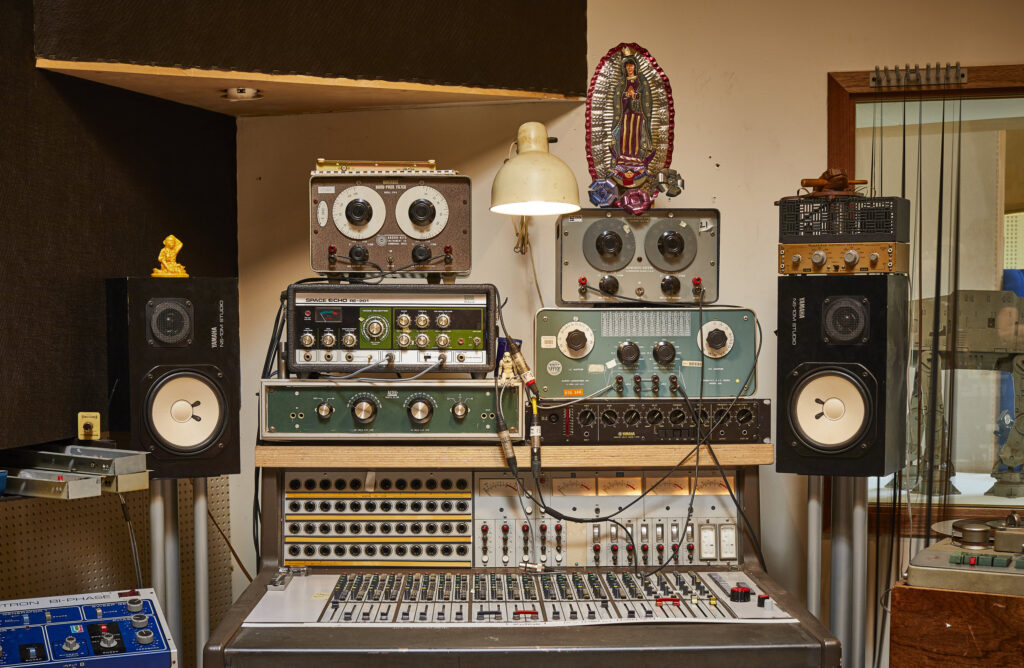You are spoilt for choice in terms of different ways of controlling and manipulating your sound with a range of different controllers and functionality. Below is an overview of some of the different types of hardware available. There is also more on MIDI here.

Music controllers come in various forms, catering to different needs and preferences in music production, performance, and DJing. Here are the main types of music controllers:
1. MIDI Keyboards
- Description: These are piano-style keyboards that send MIDI signals to computers or other hardware.
- Features: Varying number of keys (25, 49, 61, 88), velocity sensitivity, aftertouch, additional controls like pitch bend, modulation wheels, and knobs or sliders.
2. Pad Controllers
- Description: Feature a grid of pads that can trigger samples, loops, and MIDI notes.
- Examples: Ableton Push, Akai MPC series, Novation Launchpad.
- Features: Velocity and pressure-sensitive pads, integration with DAWs, and often include additional control buttons and knobs.
3. DJ Controllers
- Description: Designed for DJing, these controllers often mimic traditional turntables and mixers.
- Examples: Pioneer DDJ series, Native Instruments Traktor Kontrol series.
- Features: Jog wheels, crossfaders, pitch sliders, performance pads, and integration with DJ software.
4. Control Surfaces
- Description: These are used to control DAWs and other music software, featuring faders, knobs, and buttons.
- Examples: Avid Artist Mix, Mackie Control Universal.
- Features: Motorized faders, transport controls, touch-sensitive controls, and extensive DAW integration.
5. Wind Controllers
- Description: Mimic wind instruments and send MIDI signals based on breath and fingering.
- Examples: Yamaha WX5, Akai EWI.
- Features: Breath control, octave rollers, customizable fingering, and additional control buttons.
6. Guitar MIDI Controllers
- Description: Convert guitar playing into MIDI signals.
- Examples: Roland GK-3, Jamstik.
- Features: String-based input, MIDI output, often include additional control buttons.
7. Drum Controllers
- Description: Designed to simulate drum playing with pads or other input methods.
- Examples: Roland V-Drums, Alesis Strike.
- Features: Drum pads, cymbal pads, velocity sensitivity, hi-hat control, and integration with drum software.
8. Hybrid Controllers
- Description: Combine features from multiple controller types to offer versatility.
- Examples: Akai MPK series, Native Instruments Maschine.
- Features: Keys, pads, knobs, faders, and integration with both DAWs and hardware.
9. Touch Controllers
- Description: Utilize touchscreens or touch-sensitive surfaces for control such as MPE.
- Examples: ROLI Seaboard, LinnStrument.
- Features: Expressive control with touch sensitivity, multidimensional touch control, often offer innovative playing techniques.
10. Foot Controllers
- Description: Controlled with the feet, often used by guitarists and live performers.
- Examples: Behringer FCB1010, Line 6 FBV.
- Features: Pedals, footswitches, MIDI output, and sometimes expression pedals for continuous control.
11. Dedicated DAW Controllers
- Description: Tailored to specific DAWs for seamless integration and control.
- Examples: Ableton Push (for Ableton Live), PreSonus FaderPort (for Studio One).
- Features: DAW-specific functions, close integration, and often include displays and detailed feedback.
Each type of music controller serves specific purposes and can significantly enhance the workflow and expressiveness in music production and performance. To explore some of these in more depth take a look at range of diifferent products available in this Sound on Sound section.
